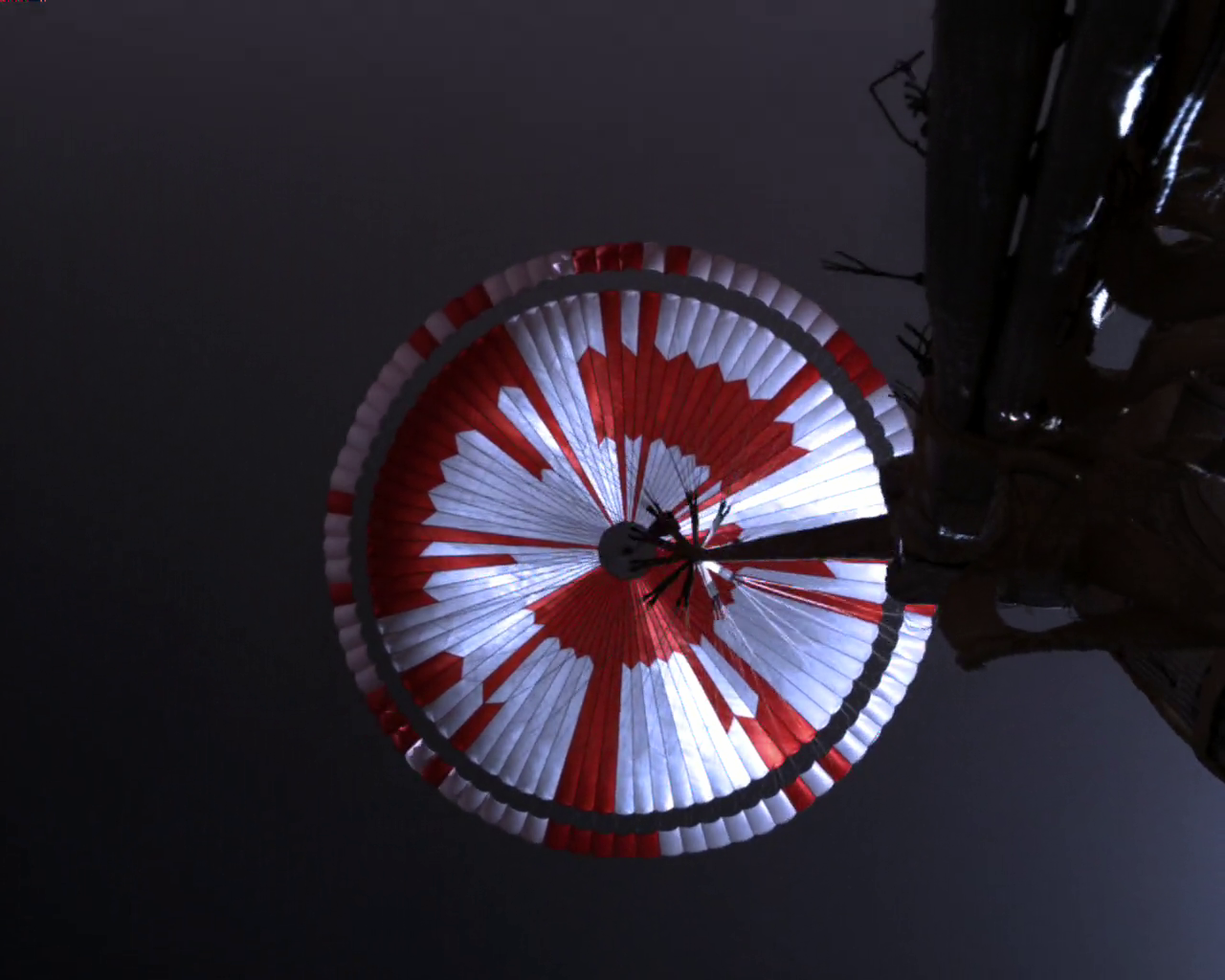Rabinovitch Research Group
Combining Computational Fluid Dynamics (CFD) and Space Exploration!
Welcome!
In our research group, we combine an interest in space exploration with fundamental computational fluid dynamics research. Our areas of interest include investigating plume-surface interactions during powered descent of spacecraft, modeling supersonic parachute inflation, hybrid rocket propulsion for small satellites, and modeling geophysical phenomena, such as the plumes on Enceladus or Yardangs on Earth and Mars! We are always looking for new and exciting projects as well.
Interested in learning more about what we have been up to recently? Please see our Activities and News page!
A few recent highlights from the RRG:
November 26th, 2025 - The paper “A description of plume-surface interactions and non-dimensional analysis for crater formation” is accepted for publication in the journal Acta Astronautica! Gregory Shallcross, a technologist at NASA’s Jet Propulsion Laboratory, California Institute of Technology, is the first author.
November 23rd, 2025 - Andrew Sayad and Prof. Rabinovitch attend the 78th APS Division of Fluid Dynamics Annual Meeting in Houston, TX. Andrew gives a presentation on our recent shock/droplet aerobreakup modeling work entitled “Computational Modeling of Hypersonic Droplet Aerobreakup.” Our Cornell colleagues presented “A Dissipation-Free, Sharp Interface Method for High-Fidelity Compressible Multiphase Flow Simulations” with Chase Lee as the first author/presenter.
September 28th, 2025 - Danial Ghasimi and Prof. Rabinovitch attend the DSMC 2025 Conference in Santa Fe, NM, hosted by Sandia National Laboratories. Danial gives a presentation entitled “Modeling Low-Density Parachute Broadcloth Permeability for Mars Supersonic Parachute Inflations,” focusing on our recent rarefied permeability modeling for parachute materials.
September 3rd, 2025 - The paper “Noble gas fractionation predictions for high speed sampling in the upper atmosphere of Venus” is accepted for publication in Icarus! This paper summarizes the DSMC modeling for the VATMOS-SR Mission Concept!
August 27th, 2025 - NSF ACCESS writes a short article highlighting Danial’s recent AIAA Journal paper on parachute broadcloth permeability!
July 30th, 2025 - Prof. Rabinovitch gives an invited plenary talk at the 2025 ASME Fluids Engineering Division Summer Meeting (FEDSM) entitled “High-Speed Compressible Flows and Space Exploration!” The talk included discussions on modeling supersonic parachute inflations, modeling the Enceladus plume, and the VATMOS-SR mission concept!
June 26th, 2025 - The paper “Permeability Modeling of the Mars 2020 Parachute Broadcloth Material” has been accepted for publication in the AIAA Journal! Congratulations to S.Danial Ghasimi, a PhD student in the RRG, on being the first author on this paper! This work was performed in collaboration with UIUC, Stanford, JPL/Caltech, and the University of Kentucky.
May 21st, 2025 - The paper “Hierarchical kinetic analysis for development of a reduced-order model of the multi-step thermal decomposition of munitions wastewater” has been accepted for publication in Thermochimica Acta and is available online. Congratulations to Roshan Adhikari (Stevens PhD) on being the lead author of this study!
March 10th, 2025 - Prof. Rabinovitch attends The 56th Lunar and Planetary Science Conference (LPSC) in the Woodlands, Texas, and presents a poster on the VATMOS-SR Mission Concept.
March 1st, 2025 - The Rabinovitch Research Group, in collaboration with the Computational ThermoFluids Lab (CTFLab) at Cornell University, is excited to start working on the ONR-funded project “Advancing understanding of and predictive modeling capabilities for high-speed shock-induced droplet aerobreakup and surface damage.” This project is supported through the ONR Hypersonic Aerothermodynamics, High-Speed Propulsion and Materials Program and has a 4-year period of performance.
Feb. 18th, 2025 - Universe Today highlights the VATMOS-SR mission concept!
Dec. 17th, 2024 - The paper “Sensitivity Analysis and Validation of a Computational Framework for Supersonic Parachute Inflation Dynamics” has been published in the AIAA Journal. The supersonic parachute FSI modeling work is a Stanford/JPL/Stevens collaboration.
Nov. 27th, 2024 - The publication “Experimental and numerical investigation of inertial particles in underexpanded jets” is available open-access in the Journal of Fluid Mechanics (JFM) - in volume 1000! This paper is the culmination of a multi-year collaboration between Stevens, the University of Michigan, and Johns Hopkins University!
Nov. 18th, 2024 - We are excited to announce that our proposal “To What Extent Does Enceladus' Plume Sample its Ocean: Insights from Conduit Flow Modeling” was recently selected for NASA funding through the Solar Systems Working (SSW) program. This work will be in collaboration with JPL and SWRI, and click here for more information!
NASA's Mars Perseverance rover acquired this image during its descent to Mars, using its Parachute Parachute Up-Look Camera A. This camera is mounted on the spacecraft's backshell and looks up at the parachute. This is one still frame from a sequence captured by the camera while taking video. This image was acquired on Feb. 22, 2021 (Sol 2) at the local mean solar time of 10:24:26.
Image Credit: NASA/JPL-Caltech
